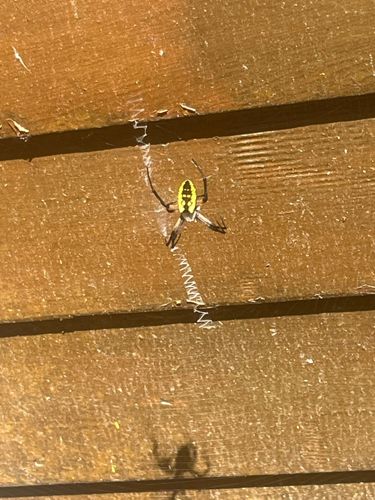Yellow Garden Spider, Black and Yellow Garden Spider, Zipper Spider, Corn Spider
Scientific Name: Argiope aurantia
Order & Family: Order: Araneae (Spiders), Family: Araneidae (Orb-weaver spiders)
Size: Female body length: 19-28 mm (0.75-1.1 inches); Male body length: 5-9 mm (0.2-0.35 inches). Leg span can be significantly larger.

Natural Habitat
Gardens, fields, meadows, shrubbery, and anywhere they can construct a large web between plants or structures. They prefer sunny areas.
Diet & Feeding
Insects such as flies, mosquitoes, bees, wasps, grasshoppers, and other small flying or jumping insects that get caught in their web.
Behavior Patterns
Female garden spiders construct large, intricate orb webs, often with a distinctive zigzag pattern (stabilimentum) in the center. The stabilimentum's purpose is debated, but it may deter birds, attract prey, or camouflage the spider within the web. They are typically active during the day, sitting head-down in the center of their web waiting for prey. When prey is caught, they quickly wrap it in silk before biting and consuming it. Males are much smaller and approach the female's web cautiously for mating, often sacrificing themselves afterwards. Eggs are laid in a silken sac, usually in the fall, which overwinters and hatches in the spring.
Risks & Benefits
Benefits: Yellow Garden Spiders are excellent pest controllers, preying on many common insect pests in gardens and agricultural settings. Risks: While they possess venom, their bite is generally not considered dangerous to humans. A bite might cause mild pain, swelling, or redness similar to a bee sting, but serious reactions are rare and usually only occur in individuals with extreme allergies.
Identified on: 8/10/2025